It’s World Book Day, and we’re pretty sure most of you would want to curl up in a corner with your favorite book, rather then sitting at your desk and working. [caption id=“attachment_1854579” align=“alignleft” width=“380”]
 Representational image. AFP[/caption] Remember
the BBC list of top 100 books
that they recommended everyone read before they die? It included a comprehensive list of global classics and bestsellers, and we thought it was only fair that on the occasion of World Book Day an Indian version is put together. The below list includes fiction and non-fiction books, from light reads to historical tell-alls, memoirs and several Man Booker Prize winners and nominees. While we would love to include regional books too, with those the recommendations would flow into 100s. So, here’s a list of 25 books, in no particular order, written by Indian authors that you must read in this lifetime. How many have you already read? 1. Train to Pakistan, Khushwant Singh [caption id=“attachment_2209338” align=“alignnone” width=“300”]
Representational image. AFP[/caption] Remember
the BBC list of top 100 books
that they recommended everyone read before they die? It included a comprehensive list of global classics and bestsellers, and we thought it was only fair that on the occasion of World Book Day an Indian version is put together. The below list includes fiction and non-fiction books, from light reads to historical tell-alls, memoirs and several Man Booker Prize winners and nominees. While we would love to include regional books too, with those the recommendations would flow into 100s. So, here’s a list of 25 books, in no particular order, written by Indian authors that you must read in this lifetime. How many have you already read? 1. Train to Pakistan, Khushwant Singh [caption id=“attachment_2209338” align=“alignnone” width=“300”]
 Book cover. Courtesy: Facebook[/caption] This historical fictional account by journalist and novelist Khushwant Singh revolves around the Partition of 1947. It chronicles the human dimension of the political events, by telling the story of Mano Majra, the fictional village on the border of Pakistan. 2. Sea of Poppies, Amitav Ghosh [caption id=“attachment_2209356” align=“alignnone” width=“300”]
Book cover. Courtesy: Facebook[/caption] This historical fictional account by journalist and novelist Khushwant Singh revolves around the Partition of 1947. It chronicles the human dimension of the political events, by telling the story of Mano Majra, the fictional village on the border of Pakistan. 2. Sea of Poppies, Amitav Ghosh [caption id=“attachment_2209356” align=“alignnone” width=“300”]
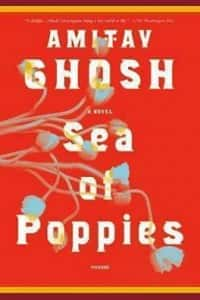 Book cover. Courtesy: Facebook[/caption] Amitav Ghosh’s Man Booker prize nominee of 2008 is set prior to the first Anglo-Chinese opium war of the 1800s, on the banks of Ganga in Calcutta. In the book, Ghosh portrays his characters as poppy seed, uncertain of their future course. 3. India After Gandhi, Ramchandra Guha [caption id=“attachment_2209386” align=“alignnone” width=“300”]
Book cover. Courtesy: Facebook[/caption] Amitav Ghosh’s Man Booker prize nominee of 2008 is set prior to the first Anglo-Chinese opium war of the 1800s, on the banks of Ganga in Calcutta. In the book, Ghosh portrays his characters as poppy seed, uncertain of their future course. 3. India After Gandhi, Ramchandra Guha [caption id=“attachment_2209386” align=“alignnone” width=“300”]
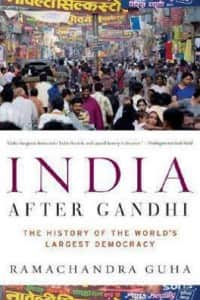 Book cover. Courtesy: Facebook[/caption] This book is a consolidated history of India after it gained independence in 1947. It’s an immediate historical go-to, almost like an encyclopedia on post-partition India. 4. Malgudi Days, R K Narayan [caption id=“attachment_2209420” align=“alignnone” width=“300”]
Book cover. Courtesy: Facebook[/caption] This book is a consolidated history of India after it gained independence in 1947. It’s an immediate historical go-to, almost like an encyclopedia on post-partition India. 4. Malgudi Days, R K Narayan [caption id=“attachment_2209420” align=“alignnone” width=“300”]
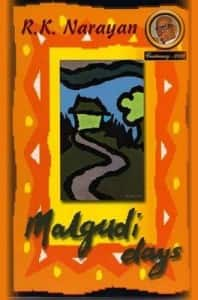 Book cover. Courtesy: Facebook[/caption] Originally published in 1943, R K Narayan’s book of short stories around the fictional village of Malgudi is what Indian nostalgia is about. It was adapted for TV in 1986 by director and actor Shankar Nag, and most of us still remember its signature tune. Penguin also published the anthology again in 1982. 5. A Suitable Boy, Vikram Seth [caption id=“attachment_2209434” align=“alignnone” width=“300”]
Book cover. Courtesy: Facebook[/caption] Originally published in 1943, R K Narayan’s book of short stories around the fictional village of Malgudi is what Indian nostalgia is about. It was adapted for TV in 1986 by director and actor Shankar Nag, and most of us still remember its signature tune. Penguin also published the anthology again in 1982. 5. A Suitable Boy, Vikram Seth [caption id=“attachment_2209434” align=“alignnone” width=“300”]
 Book cover. Courtesy: Facebook[/caption] Set in Post-Independence India, the novel follows the story of four families over a period of 18 months, while focusing on the Mehras’ and their struggle to find a match for their daughter Lata. With 1400 pages, it is one of the longest English books to be published in India. 6. Best of Manto: a collection of short stories, Saddat Hassan Manto [caption id=“attachment_2209440” align=“alignnone” width=“300”]
Book cover. Courtesy: Facebook[/caption] Set in Post-Independence India, the novel follows the story of four families over a period of 18 months, while focusing on the Mehras’ and their struggle to find a match for their daughter Lata. With 1400 pages, it is one of the longest English books to be published in India. 6. Best of Manto: a collection of short stories, Saddat Hassan Manto [caption id=“attachment_2209440” align=“alignnone” width=“300”]
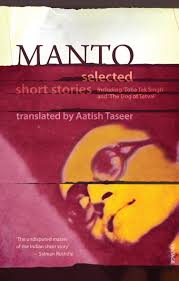 Book cover. Courtesy: Facebook[/caption] Popularly known as Manto, this short story writer is one of the greatest, as well as the most controversial, writers of India. His stories, originally written in Urdu, are simply narrated, having an essence of lyricism, metaphors and deep insight into human nature. This collection of stories has been carefully translated by Aatish Taseer. 7. Narcopolis, Jeet Thayil [caption id=“attachment_2209462” align=“alignnone” width=“300”]
Book cover. Courtesy: Facebook[/caption] Popularly known as Manto, this short story writer is one of the greatest, as well as the most controversial, writers of India. His stories, originally written in Urdu, are simply narrated, having an essence of lyricism, metaphors and deep insight into human nature. This collection of stories has been carefully translated by Aatish Taseer. 7. Narcopolis, Jeet Thayil [caption id=“attachment_2209462” align=“alignnone” width=“300”]
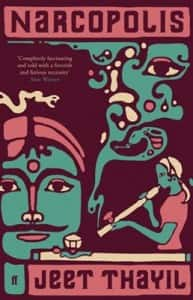 Book cover. Courtesy: Facebook[/caption] Jeet Thayil’s debut novel was short listed for the Man Booker Prize in 2012. The book jacket calls it a hallucinatory dream of a book that chronicles the opuim-rich, chaotic and urbane Bombay of 1970s. It won the DSC Prize for South Asian Literature 2013 at DSC Jaipur Literature Festival. 8. The Jungle Book, Rudyard Kipling [caption id=“attachment_2209478” align=“alignnone” width=“300”]
Book cover. Courtesy: Facebook[/caption] Jeet Thayil’s debut novel was short listed for the Man Booker Prize in 2012. The book jacket calls it a hallucinatory dream of a book that chronicles the opuim-rich, chaotic and urbane Bombay of 1970s. It won the DSC Prize for South Asian Literature 2013 at DSC Jaipur Literature Festival. 8. The Jungle Book, Rudyard Kipling [caption id=“attachment_2209478” align=“alignnone” width=“300”]
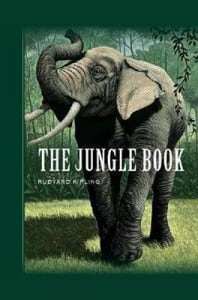 Book cover. Courtesy: Facebook[/caption] A collection of short stories by English author Rudyard Kipling, The Jungle Book is still as Indian a book as any. The stories were first published in magazines between 1893-94, with illustrations from Kipling’s father John Wockwood Kipling. The stories in the book use animal characters who speak in English to tell moral tales. 9. The Complete Adventures of Feluda, Satyajit Ray [caption id=“attachment_2209486” align=“alignnone” width=“300”]
Book cover. Courtesy: Facebook[/caption] A collection of short stories by English author Rudyard Kipling, The Jungle Book is still as Indian a book as any. The stories were first published in magazines between 1893-94, with illustrations from Kipling’s father John Wockwood Kipling. The stories in the book use animal characters who speak in English to tell moral tales. 9. The Complete Adventures of Feluda, Satyajit Ray [caption id=“attachment_2209486” align=“alignnone” width=“300”]
 Book cover. Courtesy: Facebook[/caption] Between 1965 and 1992, Satyajit Ray wrote a total of 35 Feluda stories, featuring the master sleuth Pradosh C. Mitter, AKA Feluda. The plots involve murder, mystery and adventure, most of the times in exotic locations, narrated in a racy, humorous style. All the stories are now available together in a two volume omnibus published by Penguin. 10. Cuckold, Kiran Nagarkar [caption id=“attachment_2209508” align=“alignnone” width=“300”]
Book cover. Courtesy: Facebook[/caption] Between 1965 and 1992, Satyajit Ray wrote a total of 35 Feluda stories, featuring the master sleuth Pradosh C. Mitter, AKA Feluda. The plots involve murder, mystery and adventure, most of the times in exotic locations, narrated in a racy, humorous style. All the stories are now available together in a two volume omnibus published by Penguin. 10. Cuckold, Kiran Nagarkar [caption id=“attachment_2209508” align=“alignnone” width=“300”]
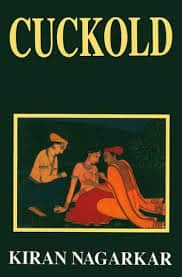 Book cover. Courtesy: Facebook[/caption] This historical novel set in the Rajput kingdom of Mewar in India during the 17th century follows the life of Maharaj Kumar, a fictional character based upon the real life ruler Thakur Bhojraj. The novel follows the maharaja’s attempt to win the affection of his wife while a war ravages around them. 11. English, August; Upamanyu Chatterjee [caption id=“attachment_2209534” align=“alignnone” width=“300”]
Book cover. Courtesy: Facebook[/caption] This historical novel set in the Rajput kingdom of Mewar in India during the 17th century follows the life of Maharaj Kumar, a fictional character based upon the real life ruler Thakur Bhojraj. The novel follows the maharaja’s attempt to win the affection of his wife while a war ravages around them. 11. English, August; Upamanyu Chatterjee [caption id=“attachment_2209534” align=“alignnone” width=“300”]
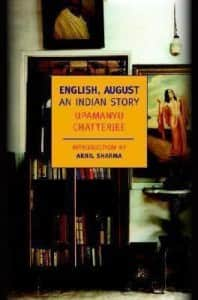 Book cover. Courtesy: Facebook[/caption] The book chronicles one year in the life of a trainee civil servant, Agastya Sen, on his first posting-cum-training session to Madna, a negligible fictional village in the vast Indian hinterland. The book was first written in 1988 and later adapted to a movie in 1994. It touches upon pressing issues of rural versus urban Indian lives, with themes that are still relevant today. 12. Blue Umbrella, Ruskin Bond [caption id=“attachment_2209558” align=“alignnone” width=“300”]
Book cover. Courtesy: Facebook[/caption] The book chronicles one year in the life of a trainee civil servant, Agastya Sen, on his first posting-cum-training session to Madna, a negligible fictional village in the vast Indian hinterland. The book was first written in 1988 and later adapted to a movie in 1994. It touches upon pressing issues of rural versus urban Indian lives, with themes that are still relevant today. 12. Blue Umbrella, Ruskin Bond [caption id=“attachment_2209558” align=“alignnone” width=“300”]
 Book cover. Courtesy: Facebook[/caption] This children’s book written by Mussorie-based Ruskin Bond revolves around a little girl’s umbrella that she traded with her old necklace. The umbrella soon becomes a premium property in the village. The film was later adapted by Vishal Bhardwaj in 2005, and it won the National Award as well. 13. Socialite Evenings, Shobhaa De [caption id=“attachment_2209582” align=“alignnone” width=“300”]
Book cover. Courtesy: Facebook[/caption] This children’s book written by Mussorie-based Ruskin Bond revolves around a little girl’s umbrella that she traded with her old necklace. The umbrella soon becomes a premium property in the village. The film was later adapted by Vishal Bhardwaj in 2005, and it won the National Award as well. 13. Socialite Evenings, Shobhaa De [caption id=“attachment_2209582” align=“alignnone” width=“300”]
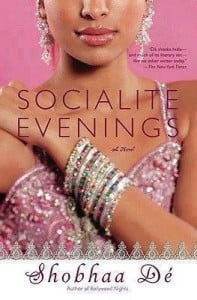 Book cover. Courtesy: Facebook[/caption] Shobhaa De’s first novel is everything you would expect from a book about the upper social crust of Mumbai. Socialite Karuna seeks an escape from her drab life by writing saucy memoirs, which are very successful. The book talks about themes that aren’t brought up in daily conversations: loveless marriages of the rich, false spiritual leaders, social responsibility versus the decadence of the elite. 14. Gitanjali, Rabindranath Tagore [caption id=“attachment_2209590” align=“alignnone” width=“300”]
Book cover. Courtesy: Facebook[/caption] Shobhaa De’s first novel is everything you would expect from a book about the upper social crust of Mumbai. Socialite Karuna seeks an escape from her drab life by writing saucy memoirs, which are very successful. The book talks about themes that aren’t brought up in daily conversations: loveless marriages of the rich, false spiritual leaders, social responsibility versus the decadence of the elite. 14. Gitanjali, Rabindranath Tagore [caption id=“attachment_2209590” align=“alignnone” width=“300”]
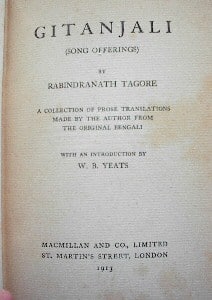 Gitanjali’s title page. Courtesy: Facebook[/caption] Gitanjali, or Song Offerings is a collection of poems written by Rabindranath Tagore in the early 1900s. The themes of the poems revolve around nature and spirituality and in 1913, Tagore became the first non-European to win the Nobel Prize for Literature for the english translation of the poems. 15. Coolie, Mulk Raaj Anand [caption id=“attachment_2209612” align=“alignnone” width=“300”]
Gitanjali’s title page. Courtesy: Facebook[/caption] Gitanjali, or Song Offerings is a collection of poems written by Rabindranath Tagore in the early 1900s. The themes of the poems revolve around nature and spirituality and in 1913, Tagore became the first non-European to win the Nobel Prize for Literature for the english translation of the poems. 15. Coolie, Mulk Raaj Anand [caption id=“attachment_2209612” align=“alignnone” width=“300”]
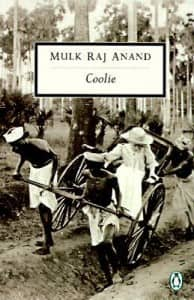 Book cover. Courtesy: Facebook[/caption] First published in 1936, Anand’s novel revolves around criticism of the British rule and Indian caste system. It portrays the adventures of its title character Munoo, who is forced to leave his village to fend for himself and make in a mark in the growing industrialist country. 16. All About H Hatter, G V Desani [caption id=“attachment_2209624” align=“alignnone” width=“300”]
Book cover. Courtesy: Facebook[/caption] First published in 1936, Anand’s novel revolves around criticism of the British rule and Indian caste system. It portrays the adventures of its title character Munoo, who is forced to leave his village to fend for himself and make in a mark in the growing industrialist country. 16. All About H Hatter, G V Desani [caption id=“attachment_2209624” align=“alignnone” width=“300”]
 Book cover. Courtesy: Facebook[/caption] H. Hatterr is the son of a European merchant officer and a lady from Penang who has been raised and educated in missionary schools in Calcutta. His story is of his search for enlightenment as, in the course of visiting seven Oriental cities, he consults with seven sages, each of whom specializes in a different aspect of “living.” 17. History of Indian Cricket, Mihir Bose [caption id=“attachment_2209632” align=“alignnone” width=“300”]
Book cover. Courtesy: Facebook[/caption] H. Hatterr is the son of a European merchant officer and a lady from Penang who has been raised and educated in missionary schools in Calcutta. His story is of his search for enlightenment as, in the course of visiting seven Oriental cities, he consults with seven sages, each of whom specializes in a different aspect of “living.” 17. History of Indian Cricket, Mihir Bose [caption id=“attachment_2209632” align=“alignnone” width=“300”]
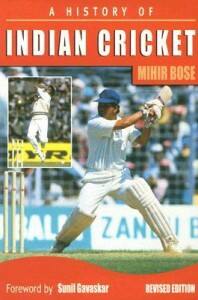 Book cover. Courtesy: Facebook[/caption] In this book, Mihir Bose examines the rollercoaster nature of India’s cricket history, from its early days in the time of the British Raj to the present day period. For those who didn’t have a TV while growing up, this book serves as a tell all of the Indian sports world. It also includes a foreward by Sunil Gavaskar. 18. The Great Indian Novel, Shashi Tharoor [caption id=“attachment_2209640” align=“alignnone” width=“300”]
Book cover. Courtesy: Facebook[/caption] In this book, Mihir Bose examines the rollercoaster nature of India’s cricket history, from its early days in the time of the British Raj to the present day period. For those who didn’t have a TV while growing up, this book serves as a tell all of the Indian sports world. It also includes a foreward by Sunil Gavaskar. 18. The Great Indian Novel, Shashi Tharoor [caption id=“attachment_2209640” align=“alignnone” width=“300”]
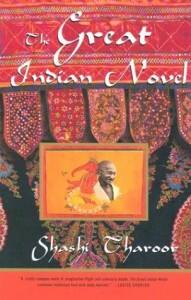 Book cover. Courtesy: Facebook[/caption] Shashi Tharoor recasts the 2,000 year-old epic, The Mahabharata, with fictional but highly recognizable events and characters from twentieth-century Indian politics, in this award-winning, internationally acclaimed novel. Chronicling the Indian struggle for freedom and independence from England, Tharoor directs his satire as much against Indian babus as the English rulers. 19. Hullabaloo in the Guava Orchard, Kiran Desai [caption id=“attachment_2209650” align=“alignnone” width=“300”]
Book cover. Courtesy: Facebook[/caption] Shashi Tharoor recasts the 2,000 year-old epic, The Mahabharata, with fictional but highly recognizable events and characters from twentieth-century Indian politics, in this award-winning, internationally acclaimed novel. Chronicling the Indian struggle for freedom and independence from England, Tharoor directs his satire as much against Indian babus as the English rulers. 19. Hullabaloo in the Guava Orchard, Kiran Desai [caption id=“attachment_2209650” align=“alignnone” width=“300”]
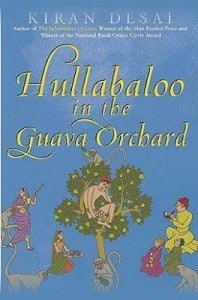 Book cover. Courtesy: Facebook[/caption] Set in the Indian village of Shahkot in Punjab, the novel follows the exploits of a young man, Sampath Chawla, trying to avoid the responsibilities of adult life. It won the Betty Trasl award in 1998. Fed up with his life, Chawla climbs up a Guava tress and tries to set his life there, only to soon become a holy man of sorts. Kiran Desai based this book on a real life story in which a man, called Kapila Pradhan, who lived up a tree for 15 years. 20. Maximum City, Suketu Mehta [caption id=“attachment_2209660” align=“alignnone” width=“300”]
Book cover. Courtesy: Facebook[/caption] Set in the Indian village of Shahkot in Punjab, the novel follows the exploits of a young man, Sampath Chawla, trying to avoid the responsibilities of adult life. It won the Betty Trasl award in 1998. Fed up with his life, Chawla climbs up a Guava tress and tries to set his life there, only to soon become a holy man of sorts. Kiran Desai based this book on a real life story in which a man, called Kapila Pradhan, who lived up a tree for 15 years. 20. Maximum City, Suketu Mehta [caption id=“attachment_2209660” align=“alignnone” width=“300”]
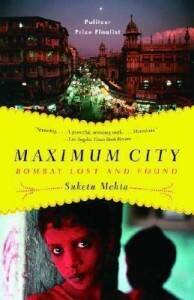 Book cover. Courtesy: Facebook[/caption] A native of Bombay, Suketu Mehta gives us an insider’s view of this stunning metropolis. He returns to the city after many years and approaches the city from unexpected angles, taking us into the criminal underworld of rival gangs; follows the life of a bar dancer raised amid poverty and abuse; gives us scoop on the growing business of Bollywood; and delves into the stories of the countless villagers who come in search of a better life and end up living on the sidewalks. 21. A Corner of a Foreign Field, Ramchandra Guha [caption id=“attachment_2209670” align=“alignnone” width=“300”]
Book cover. Courtesy: Facebook[/caption] A native of Bombay, Suketu Mehta gives us an insider’s view of this stunning metropolis. He returns to the city after many years and approaches the city from unexpected angles, taking us into the criminal underworld of rival gangs; follows the life of a bar dancer raised amid poverty and abuse; gives us scoop on the growing business of Bollywood; and delves into the stories of the countless villagers who come in search of a better life and end up living on the sidewalks. 21. A Corner of a Foreign Field, Ramchandra Guha [caption id=“attachment_2209670” align=“alignnone” width=“300”]
 Book cover. Courtesy: Facebook[/caption] The extraordinary life of India’s first great slow bowler, Palwankar Baloo, introduces the reader to the still-unfinished struggle against caste discrimination. Later chapters explore the competition between Hindu and Muslim cricketers in colonial India and the extraordinary passions now provoked when India plays Pakistan.An important, pioneering work, essential for anyone interested in cricket and India, A Corner of a Foreign Field is also a beautifully written meditation on the ramifications of sport in society at large, and how sport can influence both social and political history. 22. Turbulence, Samit Basu [caption id=“attachment_2209678” align=“alignnone” width=“300”]
Book cover. Courtesy: Facebook[/caption] The extraordinary life of India’s first great slow bowler, Palwankar Baloo, introduces the reader to the still-unfinished struggle against caste discrimination. Later chapters explore the competition between Hindu and Muslim cricketers in colonial India and the extraordinary passions now provoked when India plays Pakistan.An important, pioneering work, essential for anyone interested in cricket and India, A Corner of a Foreign Field is also a beautifully written meditation on the ramifications of sport in society at large, and how sport can influence both social and political history. 22. Turbulence, Samit Basu [caption id=“attachment_2209678” align=“alignnone” width=“300”]
 Book cover. Courtesy: Facebook[/caption] Four hundred and three passengers are traveling on British Airways flight 142 from London to Delhi, when they fall asleep and wake up to find themselves as embodiments of the superpowers they were dreaming about. 23. Fasting, Feasting, Anita Desai [caption id=“attachment_2209682” align=“alignnone” width=“300”]
Book cover. Courtesy: Facebook[/caption] Four hundred and three passengers are traveling on British Airways flight 142 from London to Delhi, when they fall asleep and wake up to find themselves as embodiments of the superpowers they were dreaming about. 23. Fasting, Feasting, Anita Desai [caption id=“attachment_2209682” align=“alignnone” width=“300”]
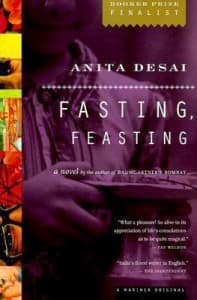 Book cover. Courtesy: Facebook[/caption] Anita Desai’s book on intricate family relations in two countries, India and the United States, was short listed for Booker Prize in 1999. The story focuses on the life of the unmarried and main character, Uma, a spinster, the family’s older daughter, with Arun, the boy and baby of the family. 24. Sunny Days, Sunil Gavaskar [caption id=“attachment_2209692” align=“alignnone” width=“300”]
Book cover. Courtesy: Facebook[/caption] Anita Desai’s book on intricate family relations in two countries, India and the United States, was short listed for Booker Prize in 1999. The story focuses on the life of the unmarried and main character, Uma, a spinster, the family’s older daughter, with Arun, the boy and baby of the family. 24. Sunny Days, Sunil Gavaskar [caption id=“attachment_2209692” align=“alignnone” width=“300”]
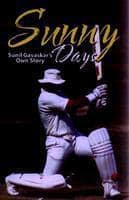 Book cover. Courtesy: Facebook[/caption] Sunny Days is the fascinating record of the growth of Gavaskar, considered one of India’s greatest batsmen, whose astonishing feats on the cricket field have had innumerable records rewritten. A fascinating look in to the life and career beginnings of the one of the greatest test match opening batsman. Told with a stark view towards his own career but with anecdotes sprinkled liberally, this book is a must reader for any cricket lover and for fans of Sunil Gavaskar. 25. Durbar, Tavleen Singh [caption id=“attachment_2209696” align=“alignnone” width=“300”]
Book cover. Courtesy: Facebook[/caption] Sunny Days is the fascinating record of the growth of Gavaskar, considered one of India’s greatest batsmen, whose astonishing feats on the cricket field have had innumerable records rewritten. A fascinating look in to the life and career beginnings of the one of the greatest test match opening batsman. Told with a stark view towards his own career but with anecdotes sprinkled liberally, this book is a must reader for any cricket lover and for fans of Sunil Gavaskar. 25. Durbar, Tavleen Singh [caption id=“attachment_2209696” align=“alignnone” width=“300”]
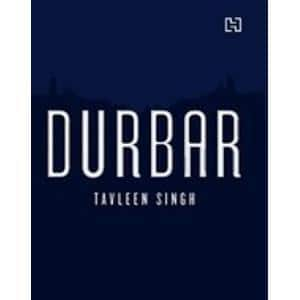 Book cover. Courtesy: Facebook[/caption] In the summer of 1975 Tavleen Singh, not yet twenty-five, started working as a junior reporter in the Statesman in New Delhi. Within five weeks, Prime Minister Indira Gandhi declared Emergency, suspending fundamental rights and imposing press censorship. Durbar is Singh’s remarkable memoir and it includes insider scoop on election campaigns and society dinners, low conspiracies and high corruption, among other fascinating facts.
Book cover. Courtesy: Facebook[/caption] In the summer of 1975 Tavleen Singh, not yet twenty-five, started working as a junior reporter in the Statesman in New Delhi. Within five weeks, Prime Minister Indira Gandhi declared Emergency, suspending fundamental rights and imposing press censorship. Durbar is Singh’s remarkable memoir and it includes insider scoop on election campaigns and society dinners, low conspiracies and high corruption, among other fascinating facts.
How much do you score on this list of 25 books by Indian authors you must read?
Swetha Ramakrishnan
• April 24, 2015, 18:43:35 IST
On the occasion of World Book Day, here’s a list of 25 books, in no particular order, written by Indian authors that you must read in this lifetime. How many have you already read?
Advertisement
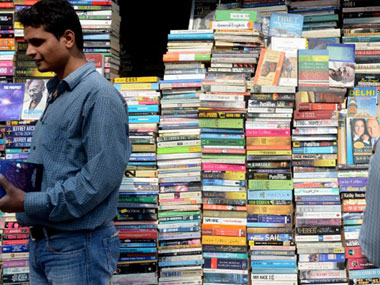)
End of Article